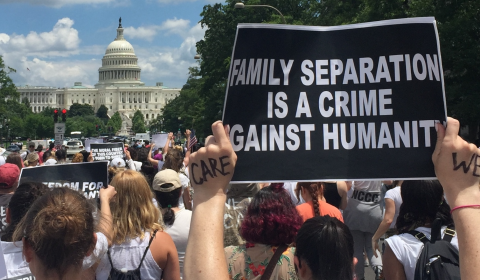The letter ‘Z’ has been popping up across Russian media, cities, and on military equipment. Whether it is a genuine movement – and what it actually means – is up for debate.
The International Gymnastics Federation (FIG) has taken disciplinary action against Russian gymnast Ivan Kuliak for showing a letter ‘Z’ while on the medal podium during a World Cup event.
Kuliak was stood next to Ukrainian competitor Illia Kovtun and has insisted he would ‘do it again’. The symbol is considered politically provocative and problematic, as it is synonymous with Russia’s military forces. ‘Z’ has been spotted on tanks, worn by Russian politicians, and been broadcast on social media.
Use of typography in this way makes it much easier for pro-Russian campaigners and advocates to broadcast their political stance. As the BBC highlights in its own piece about the symbol, 60 children and staff in the central Russian city of Kazan were seen standing in a ‘Z’ position outside a hospice this week. The image was widely shared online.
Experts also believe it’s being used by Russian forces to identify one another, ensure they are in correct strategic positions, and prevent accidental friendly fire.
The symbol is considered to be offensive and inappropriate to use outside of Russia, given that nearly the entire world has condemned the conflict and issued heavy economic sanctions. Even Coca Cola, McDonald’s, and Starbucks today announced they would be halting trade in Russia.
While social media has brought attention to the symbol, many political experts also believe it is being sponsored by the Russian state. As analysist Aglaya Snetkov commented ‘it has been pushed by the regime’.
While we can’t be entirely sure of what is happening within Putin’s borders, we do know that Russian civilians are receiving heavily biased, restrictive, and misinformed news on the conflict. Many sites and news resources – such as the BBC, Meduza, and the German broadcaster Deutsche Welle – are blocked.
The state also limits social media use, with a national ban on Facebook and heavily restricted Twitter access. TikTok users in Russia can no longer upload content after a law was passed criminalising ‘false information’ regarding the invasion.
Citizens are barred from expressing contempt for Putin’s regime and face criminal charges if they protest either online or on the streets. For these reasons it is hard to decipher just how popular the symbol really is in Russia and how much of the online ‘buzz’ is a result of sponsored manipulation.





















